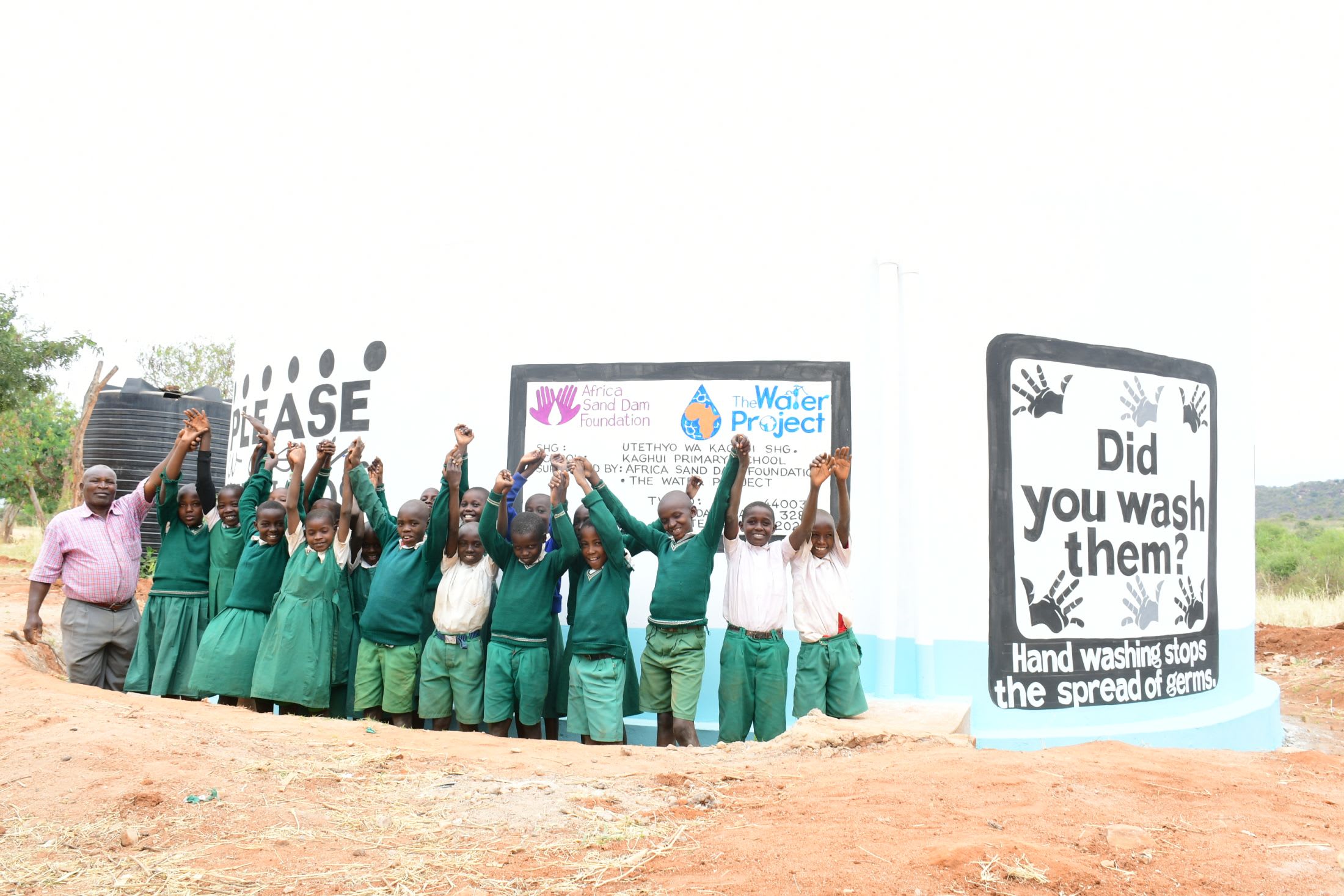The 306 students of Kaghui Primary School struggle to access sufficient water. Without enough safe water, students sacrifice their educations and, ultimately, their futures because they must spend some much time and energy finding and collecting water.

Their only water sources are the too-small rainwater collection tanks on campus and scoop holes in the local dry riverbeds. Unfortunately, collecting water from the riverbeds consumes much of their time, and many students drop out due to the stress.

Field officer Jefferson Mutie shared, "For girls, the situation is especially troublesome. It's typically the responsibility of women to fetch water, thus limiting their access to education and business opportunities. Women and young girls walk a long distance to fetch dirty water for domestic use. This leaves little time for education, which is critical to changing the long-term prospects of developing nations. With the many additional burdens that a lack of clean water brings, education simply becomes less of a priority. This sets up an unfortunate cycle of poverty and inequality as, without proper education, there is little chance of improving one's situation later in life."
12-year-old Lucy T., shown below, knows the challenge well. She has hopes and dreams for her future, but the overwhelming water crisis stands in her way.

"Back last year, when there was a severe drought, I felt like quitting school. I wanted to drop[out] and walk away because the water stress and pressure were too high. If we get water, I hope to achieve my dreams through studying. I would like to become a pilot," Lucy said.
"[The] water situation makes my life hard as the school head. I keep scratching [my] head on where and how to get a reliable source of water for my pupils. I cannot run the school well. I hope we shall have peace in school. Tree planting for fruits in the school shall be a plan we need to implement when we get water. We shall also plant vegetables for us [to] eat [at] the school. With water, we shall have our own feeding program," shared teacher John Mbwaru, 57, seen below.

What's even more heartbreaking is that the water these students work so diligently to collect, often sacrificing their education, makes them sick. Collecting water from the scoop holes at the river (representative photo below), in particular, makes students vulnerable to contamination from animals, rainwater, and human waste.

"When the situation is dire, pupils fetch water from the river, which is dirty and risky to their health. Many times, we get complaints of pupils about their stomach just after taking in this water," Jefferson continued.
Students and teachers alike must make the choice between collecting enough unsafe water and giving up valuable learning time or going without water at all. Life in Kaghui Primary School is disheartening for everyone.
The installation of the 104,000-liter rain tank will enable them to collect more water during the short rainy season, allowing them to not have to travel to the scoop holes at the river, risking their health and safety. Lucy can have the capacity to hope again of achieving her dreams of becoming a pilot and teachers like John can have the tools needed to help their students succeed.
Water at schools is unique, which is why we need unique solutions.
The Proposed Solution, Determined Together...
At The Water Project, everyone has a part in conversations and solutions. We operate in transparency, believing it benefits everyone. We expect reliability from one another as well as our water solutions. Everyone involved makes this possible through hard work and dedication.
In a joint discovery process, community members determine their most advantageous water solution alongside our technical experts. Read more specifics about this solution on the What We're Building tab of this project page. Then, community members lend their support by collecting needed construction materials (sometimes for months ahead of time!), providing labor alongside our artisans, sheltering and feeding the builders, and supplying additional resources.
Water Access for Everyone
This water project is one piece in a large puzzle. In Kenya, Sierra Leone, and Uganda, we're working toward complete coverage of reliable, maintained water sources that guarantee public access now and in the future within a 30-minute round trip for each community, household, school, and health center. One day, we hope to report that this has been achieved!
Training on Health, Hygiene & More
With the community's input, we've identified topics where training will increase positive health outcomes at personal, household, and community levels. We'll coordinate with them to find the best training date. Some examples of what we train communities on are:
- Improved hygiene, health, and sanitation habits
- Safe water handling, storage & treatment
- Disease prevention and proper handwashing
- Income-generation
- Community leadership, governance, & election of a water committee
- Operation and maintenance of the water point
Handwashing Stations
Alongside each water source in Southeast Kenya schools, we also provide three new handwashing stations fitted with three taps each, allowing nine students to wash their hands at once. These will allow everyone at the school to wash their hands without running water. Handwashing is so important to help prevent future water-related illnesses in the school community.
The student health club will maintain the stations, fill them with water, and supply them with soap (which we will teach the school community how to make during the training!).


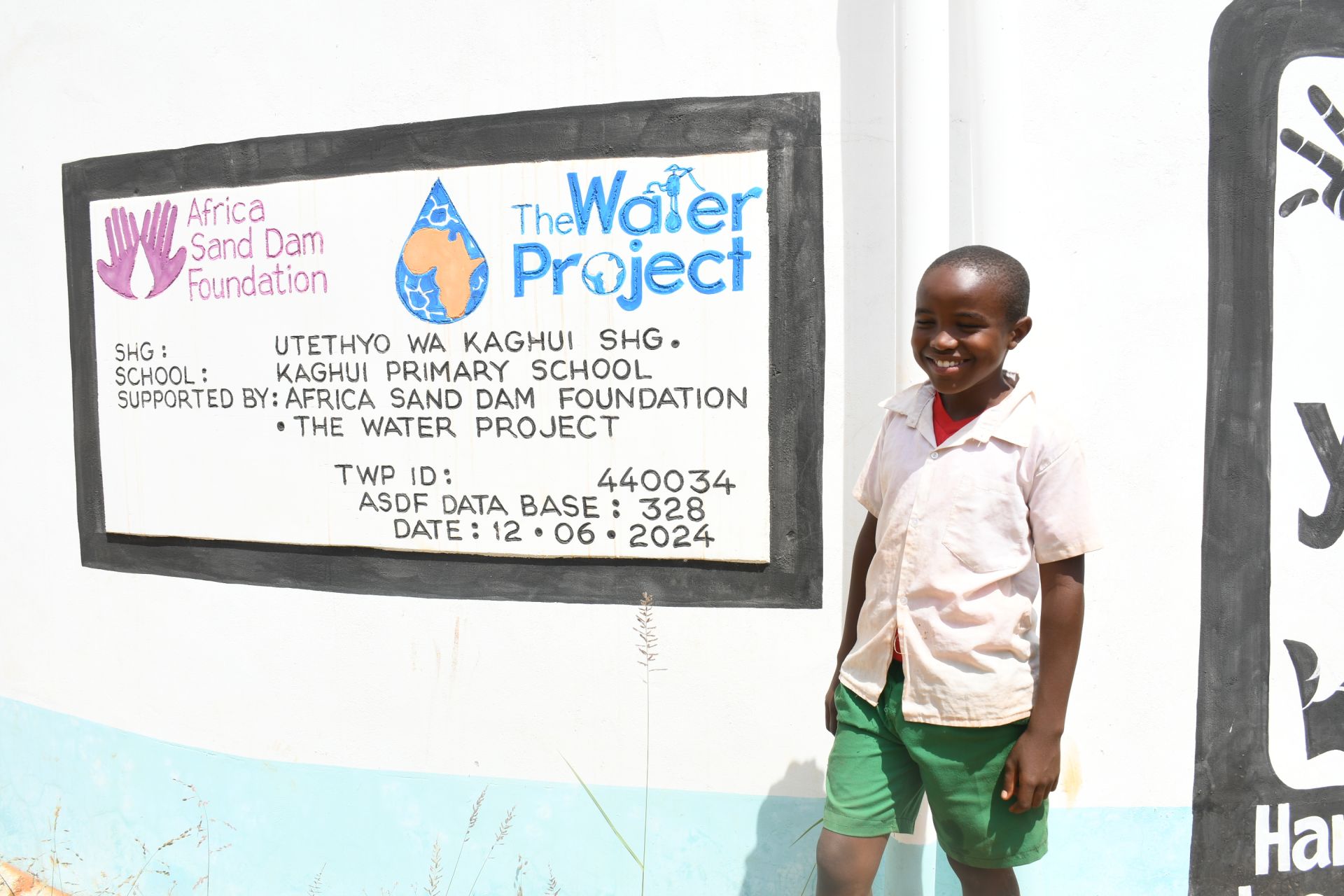
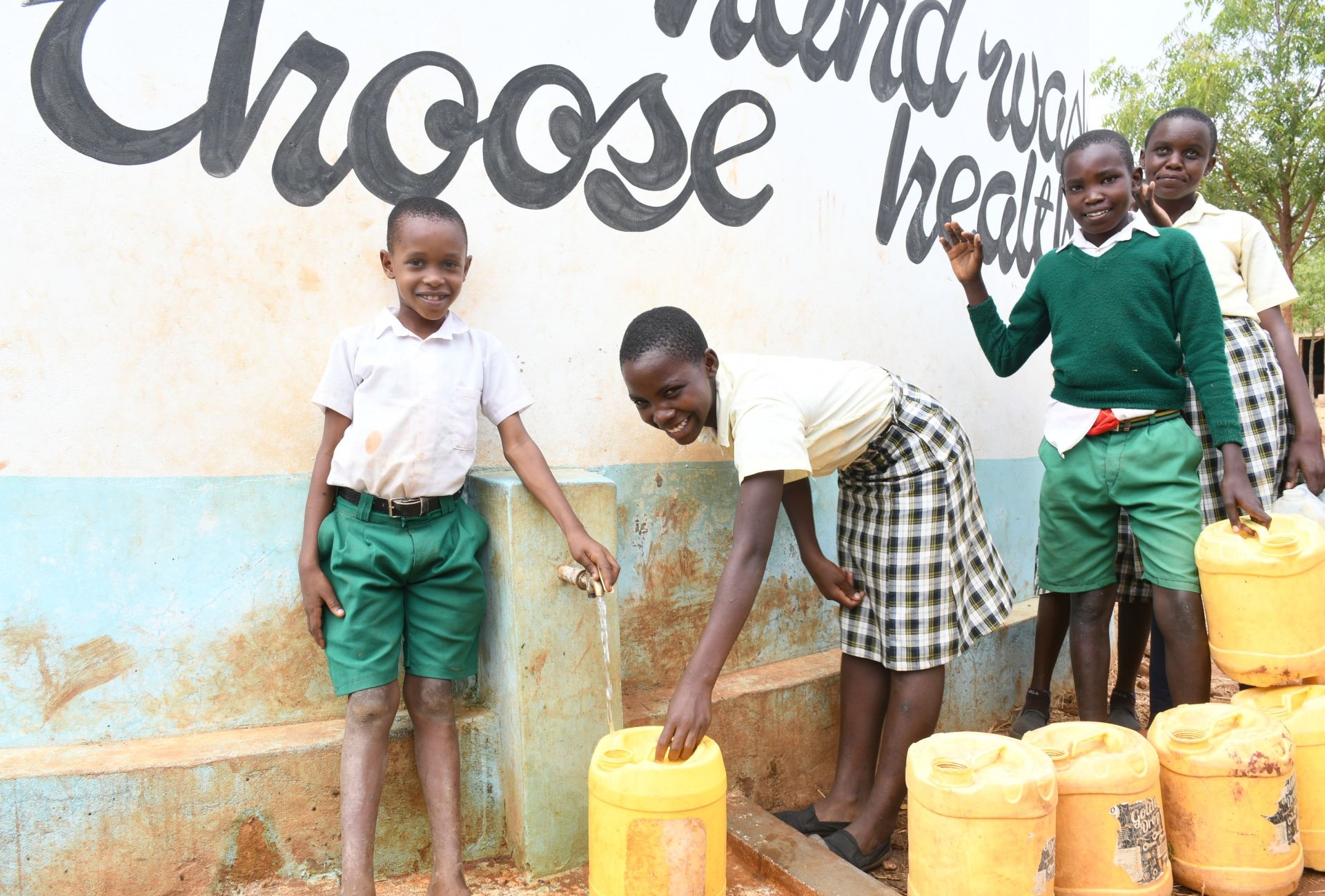
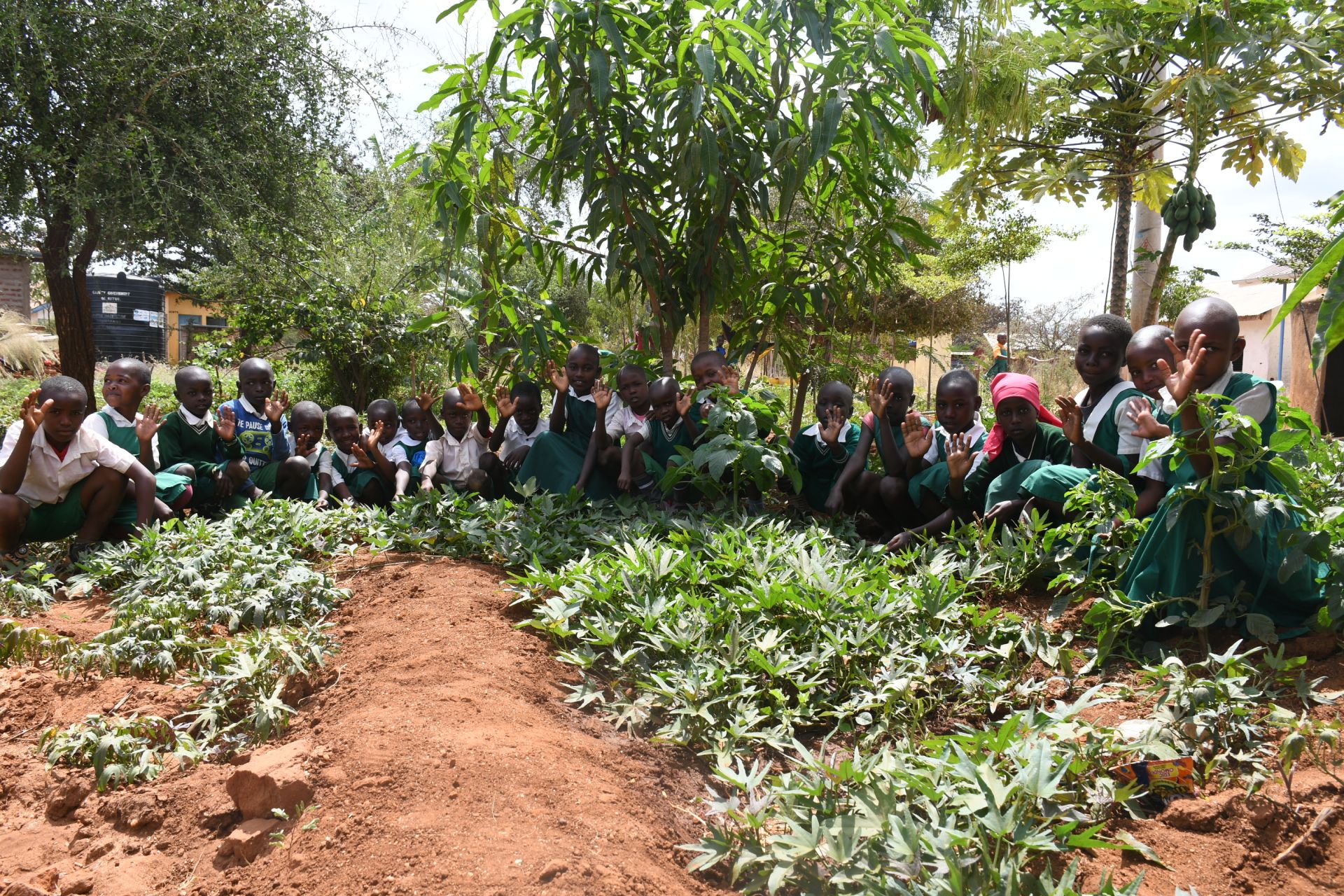
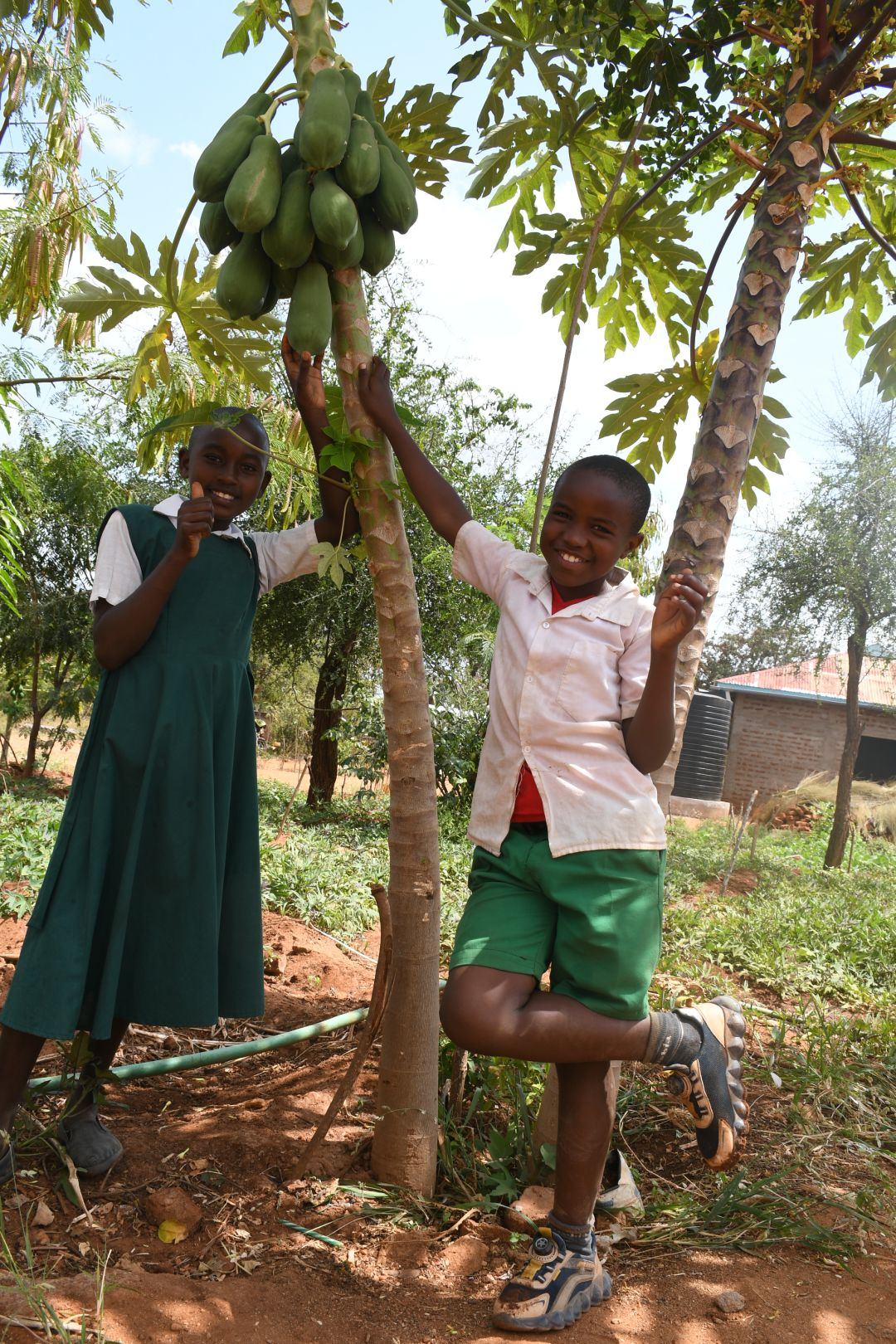

 Rainwater Catchment
Rainwater Catchment
 Rehabilitation Project
Rehabilitation Project























